Column
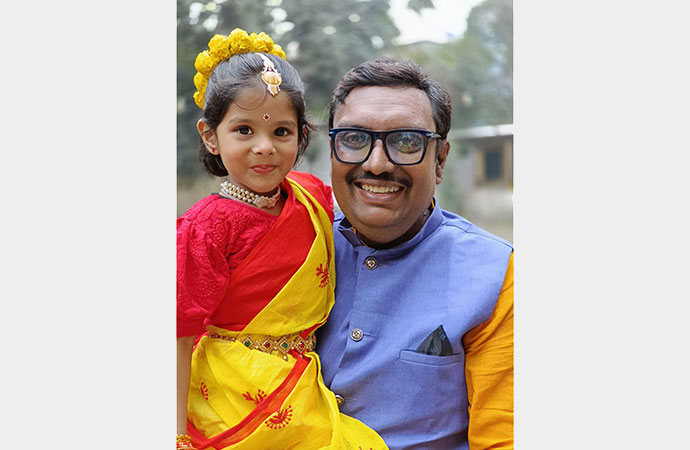
Photo: Author
I returned to Bangladesh after 40 years last week and took the opportunity to make a short trip to Kolkata as well. Decades ago, Air India had launched its flight between the two premier cities of Bengal with the advertising slogan, "Make a Bangla dash". What a wonderful pun! I took Biman Bangladesh, however, and enjoyed every moment of the short flight, including the fact that I was on a small turboprop aircraft, which brought back memories lost in the crowded aisles of jumbo jets and such like that I have encountered during my four decades in Singapore.
Also, never in my life have I eaten amshotto - mango candy - on an aircraft. The taste of the mango reconfirmed my childhood belief that although the saying "Shobar upor manush shotto, tahar upor nai" (Man is the greatest truth, none greater than he) is indeed true, what is truer is that "Shobar upor ami shotto, amshotto chai" (I am the greatest and amshotto is my prize.) Obviously, it was a sweet flight from Bangladesh to India.
Dhaka
But Dhaka first. My Santipuri Bangla - named after a place in the Nadia district of West Bengal whose local speech is taken to represent Standard Spoken Bengali - gives me away as a ghoti the moment I open my mouth in bangal Bangladesh, just as the very utterance of my name in India gives me away as a Muslim no matter how good my Santipuri Bangla is. A degree of ingrained "Otherness" is involved here: In Bangladesh, an Indian Bengali remains an Indian, just as in India, a Muslim Bengali remains a Muslim. Religion and state, therefore, are markers of identity: Language is relegated to the second tier of existence.
People do not like to talk about these things, but they are true. The Partition of 1947 produced ontological majorities on both sides of Bengal. That was the whole point of Partition, after all. Those ontological majorities manufactured in turn epistemic realities that held captive the cognitive and emotional responses of Epaar Bangla to Opaar Bangla, so much so that the very idea of Dupaar Bangla has become exotic to the point of extinction. Even here, though, language throws a spanner into the grinding work of reality. To a West Bengali like myself, Epaar Bangla - this side of Bengal - refers to West Bengal, and Opaar Bangla - that side of Bengal - to East Bengal/East Pakistan/Bangladesh. To a Bangladeshi, however, Epaar Bangla is Bangladesh, and Opaar Bangla is West Bengal/India. But in the Bengali language, epaar and opaar mean the same wherever a Bengali stands: The language does not produce a particular habitus of meaning. Language unites its speakers amidst the natural divisions of geography, exacerbated by the manmade divisions produced by history. Therein lies the majesty of the Bengali language, the mother tongue of Dupaar Bangla - the land that lies on both sides of Bengal.
Given the current political difficulties between Bangladesh and India, I had expected to be half-rebuked for speaking Santipuri Bangla in Dhaka. Instead, Tahiyat Nazifa Noor, a young Bangladeshi photojournalist with the United News of Bangladesh, complimented me on my shuddho Bangla - pure Bengali. I reminded Rodoshi (the Bangla part of her Arabic name), though, that while the standard spoken form of any language is worthy of being retained as a standard, dialects, too, play an irreplaceable role in the production and reproduction of linguistic and cultural life. The Bengali spoken in Sylhet (in Bangladesh) lies famously as far away from Santipuri Bangla as is the Bengali spoken in parts of Purulia (in West Bengal). Neither Sylhet not Purulia has declared a war of words on Santipur: Why should Santipuri Bangla-speakers then think that only they are pure? Standards, yes, but limits, no. No limits, no boundaries, no borders. Language wraps the tongue around reality: Who dare unwrap it?
I was in Bangladesh to attend a lecture given by Michael Kugelman, Director of the prestigious Wilson Center's South Asia Institute, at an event organised by the Cosmos Foundation. It went very well. At the talk, I met a young Bangladeshi who had worked in Saudi Arabia, Bahrain, the Maldives and Indonesia. He had succeeded everywhere, and was an internationalist to the core. His views on the Bengali race were profoundly simple. "We are the same people on the two sides of the border. We speak the same language. We eat the same food. Our habits, both good and bad, are recognisable instantly. That is that."
That is indeed that. What gladdened my heart was that we were speaking a day after I had received my author's copies of Sohag Chand: Homage to Bengal, published beautifully by Cosmos Books. This book is about a remembered land of the mind that straddles Bangladesh and West Bengal. Sohag Chand - "beloved Moon'' - reflects the sweet-and-sour nature of Bengal, manifested in the Bengal Renaissance of the 19th century; the Bengal Famine of the 20th century; the great Partition of 1947, which produced the iconic figure of the refugee; Kolkata's Presidency College, my alma mater; The Statesman, where I once worked for the paper of record of a resilient Bengali modernity; and the Nobel laureate Amartya Sen's encomium to Bengal in his autobiography.
The young man had not read my book of course, but he said in a few words what I had said in many: Bengal is one nation although it is bifurcated between the states of Bangladesh and India. Only poets and fools doubt the reality of states. States exist to be guarded against each other and will destroy, as they cannot but do, all that lies beyond the interests of their own survival, sovereignty, territorial integrity and security. Nations are different: They exist wherever and whenever a group of people determines of its own accord that what unites it transcends what separates it from other groups of people who believe likewise.
It was dusk when the turboprop aircraft took off from Dhaka.
A short while later, it landed in Kolkata, with my book and me.
Kolkata
Kolkata is the twin city of a bifurcated Bengal. However, even Siamese twins possess distinct personalities. The lingua franca of Dhaka's Shah Jalal International Airport is most definitely Bangla, which is true of the rest of the city and the country as well. Kolkata's Netaji Subhash Chandra Bose Airport is decidedly less Bengali, with Hindi claiming a great deal of linguistic space within the airport, as it does in the rest of the city and the country. English signages and verbal exchanges at both airports affirm the colonial provenance of the two countries, and this is not a bad thing because English is after all the most international of languages. My Hindi is rudimentary but passable, and I found it useful when speaking to the security staff, who found Hindi more nationally palatable than English, I imagine, although they are proficient in English.
I stayed with a relative in Barrackpore, very much a part of Greater Kolkata. There, it was delightful to hear Bangla as the everyday language of homes and streets, mixed with a generous dose of Hindi, both these languages being spoken by Bengalis, whether Hindu or Muslim, and immigrants of any faith.
On the day of my return, which coincided with Saraswati Puja, I was greeted by the sight of garrulous primary school children gathered on the courtyard of Uttam Chandra Prathomik Bidyalay, a school in Nona Chandanpukur which will celebrate its centenary next year. The children were waiting for the worship to begin.
Debasish Chakraborty, the Head Master, invited me in. I introduced myself and presented him with two copies of my Sohag Chand, one for the Goddess of Learning and one for him. What followed was a brief but intense discussion on the indivisible integrity of Bengal as a state of mind. Originally from Khulna, where his family lived before its migration to West Bengal well before Partition, the graduate in Mathematics from Scottish Church College (who is a distinguished photographer as well) turned out to be an ardent Muslim-lover. He explained to me, with Cartesian precision, why territorial divisions created by faith-based politics cannot outlast an inherited, archetypal and secular sense of self.
It was an intellectual epiphany to meet a teacher whose wards will help to determine the course of the Bengali nation in the decades and centuries to come. I shall not be around to witness a new Bengal, but I caught a glimpse of it in a photograph that captured the essence of the Bengali nation. That nation, like all other nations, is intergenerational. A photograph of a little student who insisted on climbing into the lap of her Head Master contours the chaste immortality of Bengal perfectly. He holds her in his protective arms. Only the present can preserve the future. But the present must be willing to do so. Schools, colleges and universities represent that present outside the intimate familiarity of home. They intervene between the home and the world, the two ultimate poles of sentient life whose rhythms are described with eager astringency by Amartya Sen in his memoir, Home in the World.
So, Bengal is my home in the world. I live somewhere else, I could die tomorrow, I could be reborn in America, Canada, Australia or New Zealand or anywhere else, or I could turn into silent dust indefinitely. Meanwhile, though, a short visit to Dhaka and a side-trip to Kolkata have affirmed the Bengaliness in me. I share that existence with millions of others.
I am not alone. I shall not leave Bengal alone when I go, although it will have to do without me.
The writer is Principal Research Fellow of the Cosmos Foundation. He may be contacted at epaaropaar@gmail.com






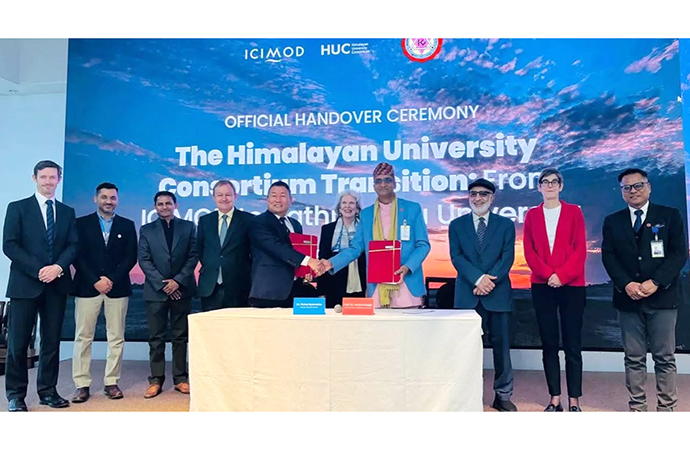
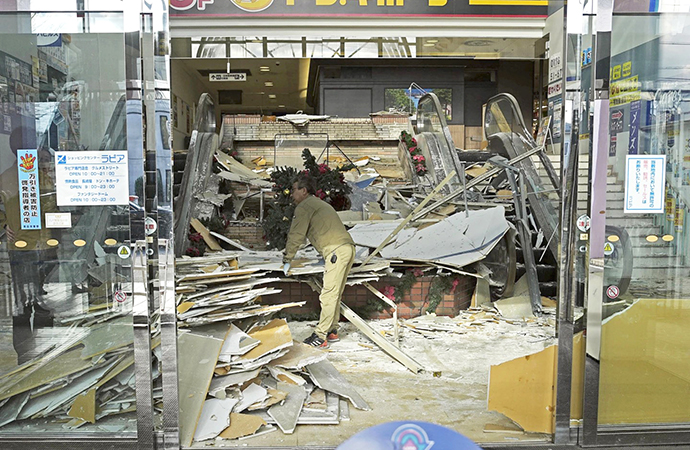


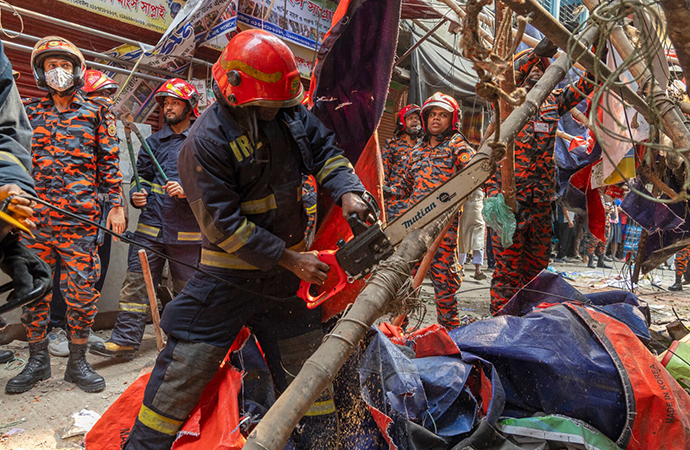
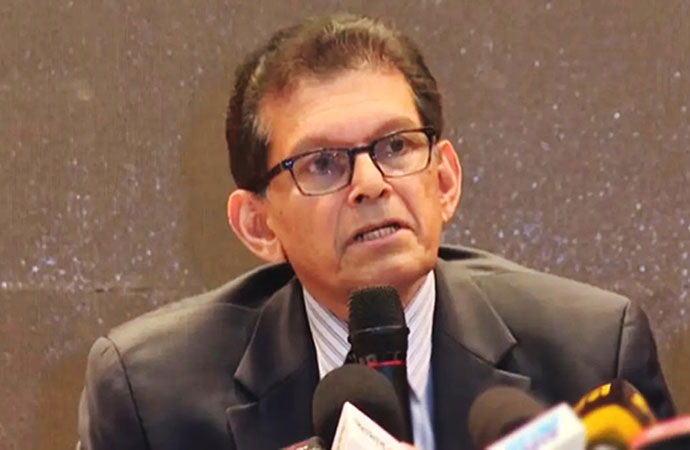
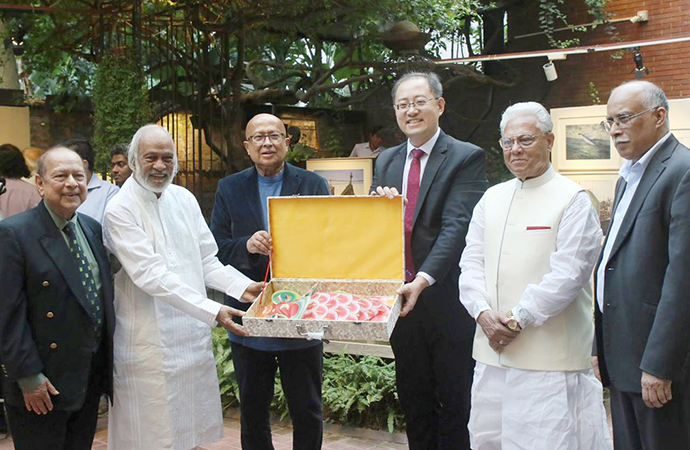
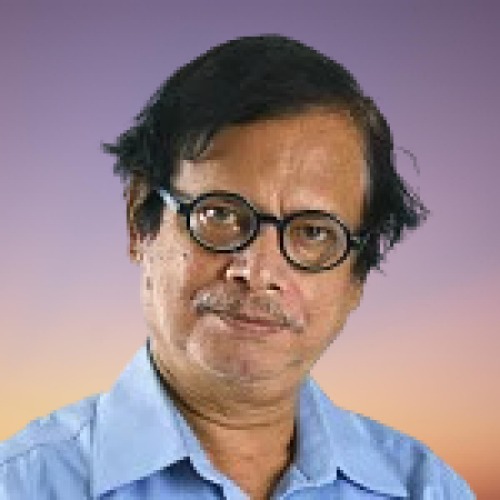


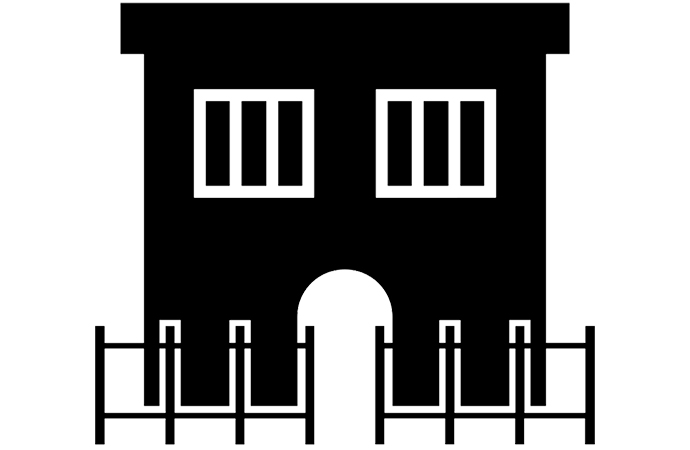

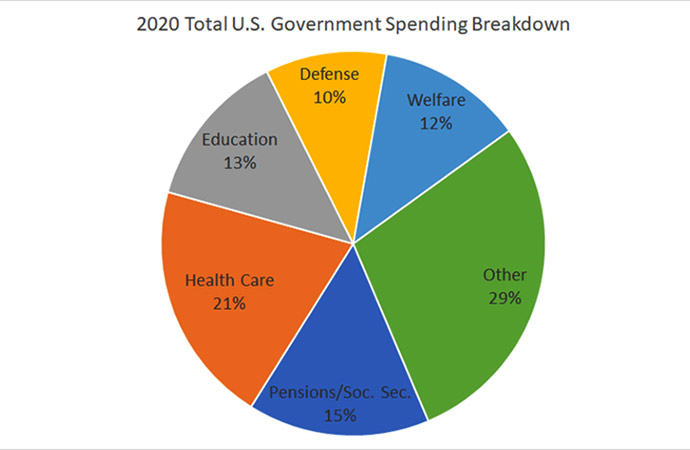
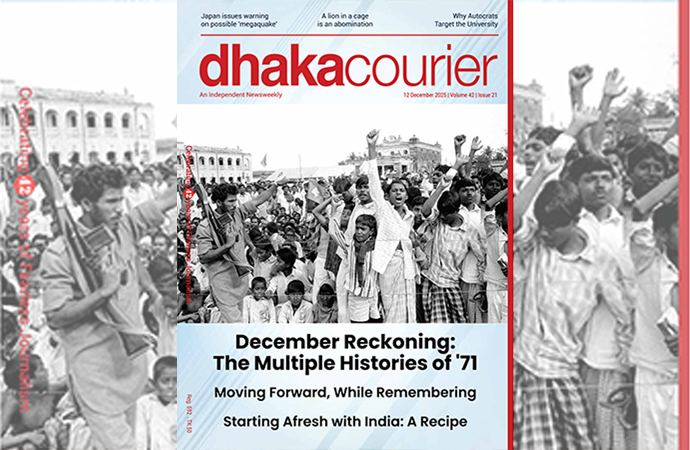
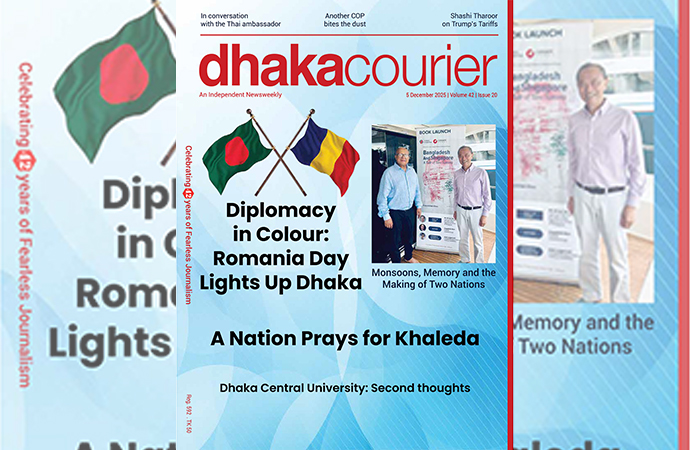
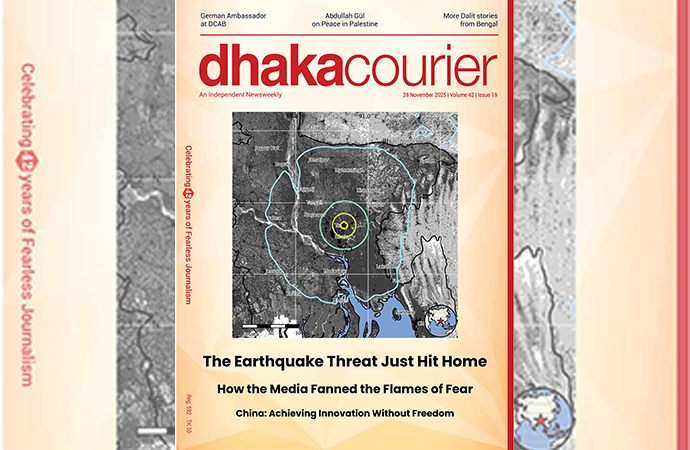
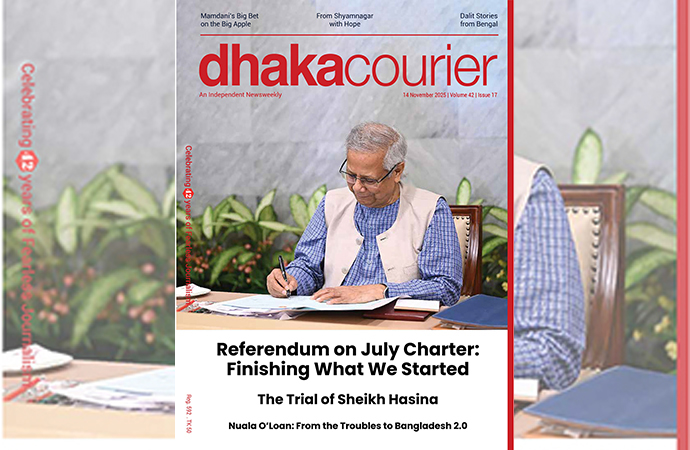
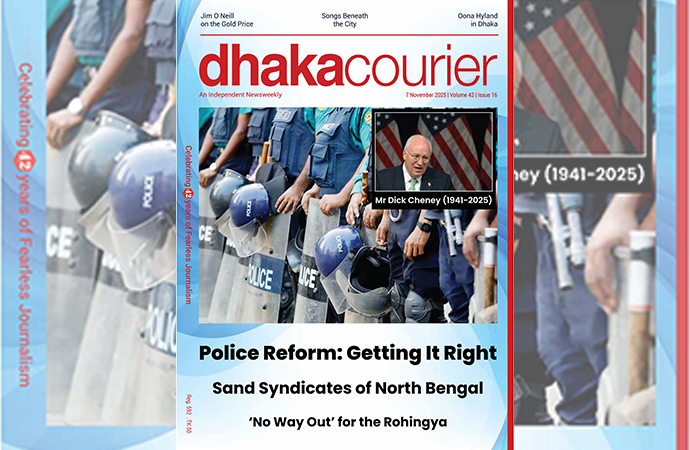
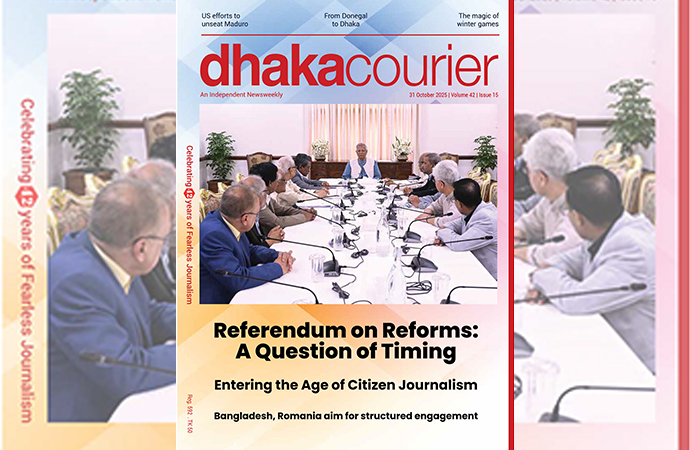
Leave a Comment
Recent Posts
Right On Schedule
The most eagerly anticipated, and frankly hyped up, announcement of an ...
Fighting raged along the borde ...
Fighting raged along the border of Cambodia and Thailand, with explosi ...
ICIMOD drives regional cooperation to inspire new mo ..
The Cage of Captivity and the Cry for Freedom: A Cru ..
Why Japan issued an advisory for a possible megaquak ..
The Autocrats’ War on Universities